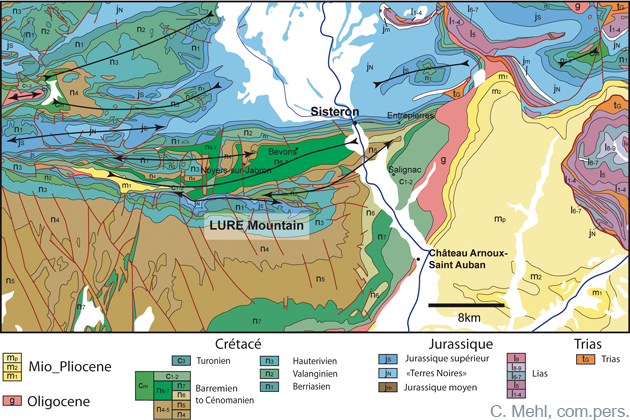Geology-Areas of Interest-The Southeast Basin of France
What impact of cenozoic deformation (ECRIS et alpine phase) on mesozoic series of the Southeast basin ? What kind of deformation record on formations of contrasted rheology ?
 |
The Southeast basin of France individualized at jurassic times between the carbonate platforms of Provence (to the south), Vivarais (to the west) and Dauphiné (to the north). Gravitational deposits attest for the major impact of bedrock topography on depositional processes within slope and basin during mesozoic times .
In a structural point of view, the southeast basin is located in the frontal part of the alpine foreland: it thus localizes in a key position to evaluate the consequences of cenozoic deformation (ECRIS and alpine phase) on mesozoic autochtonous series. Moreover, as cretaceous formations are mainly marly ones, it is possible to test the consequences of mechanical stratigraphy on bedrock deformation, by comparing mechanical records with adjacent carbonate platforms. |
The incremental deformation in the vocontian trough is characterized by regional scale kinematic data inversions on preserved faults and fractures, especially in the apto-albian marls and carbonate alternations.
A local study aims at characterizing the differential mechanical response to strain for features of contrasted rheology. Coupled inversions of kinematic data and AMS (Anisotropy of Magnetic Susceptibility ) analyses are realized in order to deconvoluate sedimentary versus tectonic records in the injectites of the Sisteron area (collaboration with Cergy Paris Université). Geochemical analyses (δ18O et δ13C) are additionaly performed on paleofluids to test the hydraulic integrity of fractured formations and characterize the origin of fluids.
